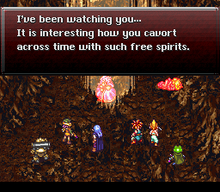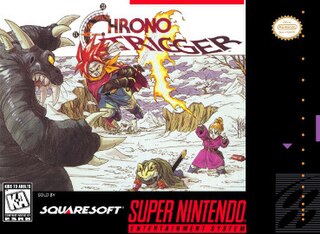
Chrono Trigger is a 1995 role-playing video game developed and published by Square. It was originally released for the Super Nintendo Entertainment System as the first entry in the Chrono series. The game's development team included three designers that Square dubbed the "Dream Team": Hironobu Sakaguchi, creator of Square's Final Fantasy series; Yuji Horii, creator of Enix's Dragon Quest series; and Akira Toriyama, character designer of Dragon Quest and author of the Dragon Ball manga series. In addition, Takashi Tokita co-directed the game and co-wrote the scenario, Kazuhiko Aoki produced the game, while Masato Kato wrote most of the story. The game's plot follows a group of adventurers who travel through time to prevent a global catastrophe.
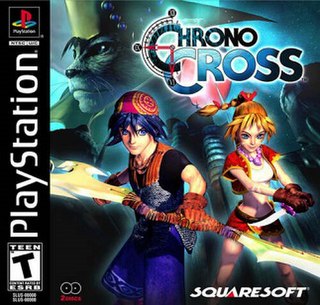
Chrono Cross is a 1999 role-playing video game developed and published by Square for the PlayStation video game console. It is set in the same world as Chrono Trigger, which was released in 1995 for the Super Nintendo Entertainment System. Chrono Cross was designed primarily by scenarist and director Masato Kato, who had help from other designers who also worked on Chrono Trigger, including art director Yasuyuki Honne and composer Yasunori Mitsuda. Nobuteru Yūki designed the characters of the game.

Radical Dreamers is a 1996 text-based visual novel adventure video game developed and published by Square for the Satellaview, a satellite peripheral for the Super Famicom. It forms part of the Chrono series, acting as a side story to the 1995 game Chrono Trigger. A version of the game is included with Chrono Cross: The Radical Dreamers Edition, which was released worldwide on April 7, 2022, for Windows, the Nintendo Switch, the PlayStation 4 and the Xbox One.
Square Co., Ltd., also known under its international brand name SquareSoft, was a Japanese video game developer and publisher. It was founded in 1986 by Masafumi Miyamoto, who spun off part of his father's electronics company Den-Yu-Sha. Among its early employees were designers Hironobu Sakaguchi, Hiromichi Tanaka, Akitoshi Kawazu and Koichi Ishii, artist Kazuko Shibuya, programmer Nasir Gebelli, and composer Nobuo Uematsu. Initially focusing on action games, the team saw popular success with the role-playing video game Final Fantasy in 1987, which would lead to the franchise of the same name being one of its tentpole franchises. Later notable staff included directors Yoshinori Kitase and Takashi Tokita, designer and writer Yasumi Matsuno, artists Tetsuya Nomura and Yusuke Naora, and composers Yoko Shimomura and Masashi Hamauzu.
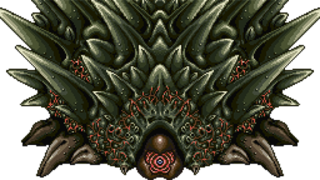
Lavos is a fictional extraterrestrial monster and the main antagonist of the 1995 role-playing video game Chrono Trigger, also appearing as an antagonist in its sequel, Chrono Cross. A parasitic alien that falls from the skies in 65,000,000 B.C., its impact results in an ice age. In the intervening time, it drains the planet's energy, until in 1999 A.D., it resurfaces, causing an apocalypse that destroys most life on the planet.
Chrono Break is a cancelled third mainline entry in the Chrono series of video games by Square. While never officially announced by the company, commentary from Chrono series developers Masato Kato, Hironobu Sakaguchi, and Takashi Tokita have confirmed early plans for the game, alongside a number of trademarks filed in the game's name. However, the game would ultimately go unproduced, with many members of the internal development team either moving on to Final Fantasy XI or leaving the company in favor of freelance work. The game elicited much commentary from the company and the video game press in the following years, though as of 2021, all trademarks had expired, with no announced plans to work on the game.

Frog, also known as Glenn, is a fictional character in the 1995 video game Chrono Trigger. He was designed by the game's artist, Akira Toriyama. He is an anthropomorphic frog knight from the Middle Ages era who was cursed into the form by his nemesis, Magus. He was born as a human by the name Glenn and a friend of the late brave knight Cyrus. After witnessing Cyrus' death at the hands of Magus and being transformed into a frog, Frog vowed to avenge Cyrus by killing Magus. During the game, he obtains the Masamune, an ancient sword whose offensive capabilities against magic users is Magus' major weakness. Frog wields a broadsword and can also learn "Water" and, like Marle, healing magic.

Ayla is a character in the 1995 video game Chrono Trigger. She is a cave woman in 65,000,000 BC who joins a group of time travelers in their quest to prevent antagonist Lavos from ending the world in 1999 AD. She is the leader (chief) of Ioka Village, and often clashes with a reptilian race called the Reptites.
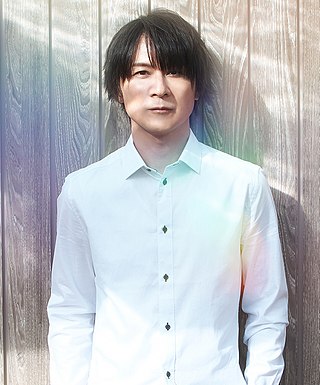
The Chrono series is a video game franchise developed and published by Square Enix. It began in 1995 with the time travel role-playing video game Chrono Trigger, which spawned two continuations, Radical Dreamers and Chrono Cross. The music of Chrono Trigger was composed primarily by Yasunori Mitsuda, with a few tracks composed by regular Final Fantasy composer Nobuo Uematsu. The Chrono Trigger soundtrack has inspired four official album releases by Square Enix: a soundtrack album released by NTT Publishing in 1995 and re-released in 2004; a greatest hits album published by DigiCube in 1999, published in abbreviated form by Tokyopop in 2001, and republished by Square Enix in 2005; an acid jazz arrangement album published and republished by NTT Publishing in 1995 and 2004; and a 2008 orchestral arranged album by Square Enix. Corresponding with the Nintendo DS release of the game, a reissued soundtrack was released in 2009. An arranged album for Chrono Trigger and Chrono Cross, entitled To Far Away Times, was released in 2015 to commemorate the 20 year anniversary of Chrono Trigger.
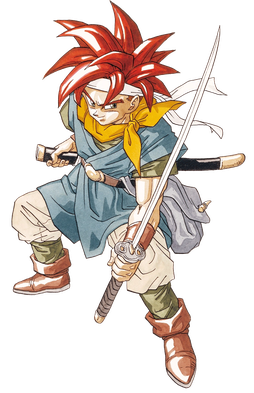
Crono, known as Chrono in Japan, is a fictional character in the Chrono series of video games by Square and the series' namesake. He has appeared in two games, starring as the protagonist in the 1995 role-playing game Chrono Trigger and Chrono Cross, where he makes a brief appearance. Crono is a silent swordsman protagonist who uses facial expressions to communicate. During a party in his hometown, Crono finds himself on a quest to protect Princess Marle. Though he is successful, the main character finds himself on a major quest to protect the world from a giant creature known as Lavos that will destroy the world in the future. Reunited with Marle and new allies, Crono goes on multiple quests to save the world.
The Chrono series is a video game franchise developed and published by Square, and is currently owned by Square Enix. The series began in 1995 with the time travel role-playing video game Chrono Trigger, which spawned two continuations, Radical Dreamers: Nusumenai Hōseki, and Chrono Cross. A promotional anime called Dimensional Adventure Numa Monjar and two ports of Chrono Trigger were also produced. As of March 31, 2003, Chrono Trigger was Square Enix's 12th best-selling game, with 2.65 million units shipped. Chrono Cross was the 24th, with 1.5 million units shipped. By 2019, the two games had sold over 5.5 million units combined. The games in the series have been called some of the greatest of all time, with most of the praise going towards Chrono Trigger. The series' original soundtracks, composed by Yasunori Mitsuda, have also been praised, with multiple soundtracks being released for them.

Chrono Cross is a role-playing video game developed and published by Square for the PlayStation video game console. It is the successor to Chrono Trigger, which was released in 1995 for the Super Nintendo Entertainment System.

This is a listing of notable characters from the video game Chrono Trigger, a role-playing video game released in 1995 by Square Co. for the Super Nintendo Entertainment System video game console. In keeping with the time travel theme of the game's storyline, the characters hail from different eras of a fictional history, ranging from prehistory to a post-apocalyptic future.

Lucca Ashtear is a character in the Chrono series of video games designed by Akira Toriyama. Her design did not change much during development, with the only major difference being a change in headgear. She is one of the main characters of the 1995 game Chrono Trigger by Square where she is known as a brilliant inventor in the canon of the series. She is the best friend of the protagonist Crono and is instrumental in advancing the story multiple times. She also appears in Chrono Cross as the caretaker to one of its protagonists, Kid.

Chrono Resurrection, also known as Chrono Trigger: Resurrection, is an unreleased fangame developed by North American team Resurrection Games under Nathan Lazur's direction. It is based on the critically acclaimed role-playing game Chrono Trigger for the Super Nintendo Entertainment System by the Japanese company Square. The project was initially called CT64 and was meant to be a complete remake of the original game for the Nintendo 64, with both 2D and 3D playing modes.

The Xenogears Original Soundtrack is the official soundtrack to Square's role-playing video game Xenogears. It was composed by Yasunori Mitsuda and contains 44 tracks, including a Bulgarian choral song and two pieces performed by the Irish singer Joanne Hogg. Though the game was released in both Japan and North America, the album was published in Japan exclusively as a two-CD set on March 1, 1998.
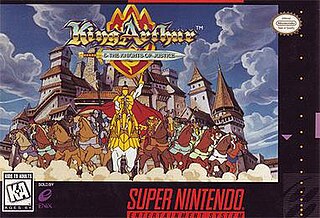
King Arthur & the Knights of Justice is an action-adventure game developed by Manley & Associates and published by Enix for the Super Nintendo Entertainment System in May 1995. Based on the cartoon series of the same title, which was loosely inspired by the Arthurian legend, the game was released in North America exclusively.
A fan game is a video game that is created by fans of a certain topic or IP. They are usually based on one, or in some cases several, video game entries or franchises. Many fan games attempt to clone or remake the original game's design, gameplay, and characters, but it is equally common for fans to develop a unique game using another as a template. Though the quality of fan games has always varied, recent advances in computer technology and in available tools, e.g. through open source software, have made creating high-quality games easier. Fan games can be seen as user-generated content, as part of the retrogaming phenomena, and as expression of the remix culture.

The Chrono series is a video game franchise developed and published by Square Enix. It began in 1995 with the time travel role-playing video game Chrono Trigger, which spawned two continuations, Radical Dreamers and Chrono Cross. The music of Chrono Cross was composed by Yasunori Mitsuda, the main composer of Chrono Trigger and Radical Dreamers. Chrono Cross has sparked a soundtrack album, released in 1999 by DigiCube and re-released in 2005 by Square Enix, and a greatest hits mini-album, published in 2000 by Square along with the North American release of the game. Radical Dreamers, the music of which heavily inspired the soundtrack of Chrono Cross, has not sparked any albums, though some songs from its soundtrack were reused in Chrono Cross. An album of arrangements of Chrono Cross songs was first announced by Mitsuda in 2005, and later intended to be released to coincide with the tenth anniversary of the game in 2009; its release date was pushed back several times since then. In 2015, Mitsuda released an album of arranged music from Chrono Trigger and Chrono Cross entitled To Far Away Times to commemorate the 20-year anniversary of Chrono Trigger.

Yuji Horii is a Japanese author, video game designer, writer and director best known as the creator of the Dragon Quest franchise, supervising and writing the scenario for Chrono Trigger, and The Portopia Serial Murder Case, released in 1983 as one of the first visual novel adventure games.

